The Azores, an archipelago in the middle of the Atlantic Ocean, have been gaining attention as a unique and sustainable destination. Comprising nine islands, each with its own distinct charm, the Azores offer a haven for nature lovers and geotourism enthusiasts. In this article, we’ll delve into the best time to visit, moving around the islands, top activities, cost considerations, and the islands’ commitment to sustainability.
Best Time to Visit the Azores: A Symphony of Seasons
The Azores boast a mild and temperate climate year-round, making it a suitable destination at any time. Great for hiking in any season, and thermal springs offer a relaxing option for water lovers in colder seasons as well. The ocean is never colder than 16 degrees Celsius (with the summer high around 23-24 degrees), therefore, with a light wet suit, you can enjoy it even in the winter season, as surfers used to do.
However, the best time to visit is during late spring to early autumn (May to October). During this period, the islands showcase vibrant colors, comfortable temperatures, and lower rainfall, providing an optimal environment for exploration.
My favorite month is October when the lush green hills and colorful flowers paint a picturesque scene. The ocean is easily enjoyable in your favorite swimming dress, and we are past the summer high season, which means that life is slower, and prices are lower.
Moving Around the Islands: Seamless Exploration
While all nine islands are worth exploring, Sao Miguel, the largest of the archipelago, stands out as the perfect starting point for first-timers. Inter-island flights and ferries provide convenient transportation options, making it easy to hop between islands. Sao Miguel’s well-maintained road network also allows for easy exploration of its diverse regions.
I used to say that Sao Miguel preserves a little of all nine islands. Here, you can visit a volcano, enjoy picturesque views, and embark on whale-watching tours. However, it’s the largest city, Ponta Delgada, with its best restaurants and magical thermal springs, that makes Sao Miguel unique and the ultimate destination.
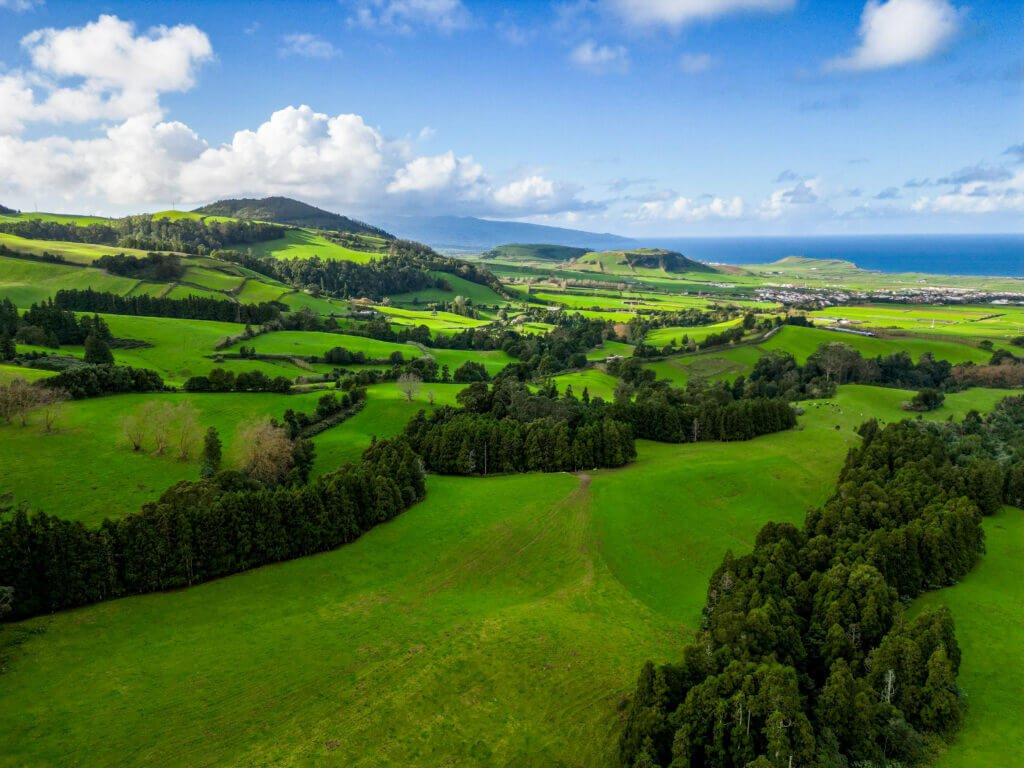
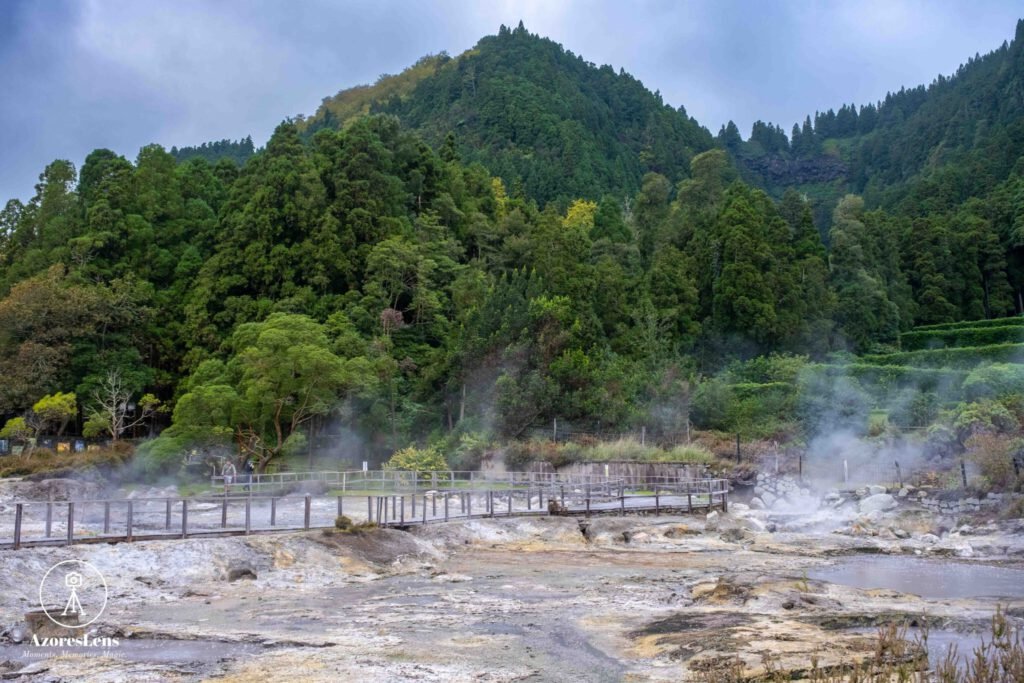
Volcanic landscape and activities of São Miguel Island
São Miguel Island in the Azores is characterized by several volcanic features, but it’s essential to note that the term “volcano” can refer to individual vents – hundreds of them forming the magical landscape of the island – or larger volcanic complexes. São Miguel has three main central volcanic complexes, each with its own features:
Sete Cidades Massif: This complex includes the iconic twin lakes of Lagoa Azul and Lagoa Verde and is associated with volcanic activity. The Sete Cidades Massif is home to the stunning twin lakes, Lagoa Azul and Lagoa Verde, which fill the craters of an ancient volcano. The varying hues of blue and green in the lakes create a breathtaking panorama, surrounded by lush green hills.The last eruption in this area is estimated to have occurred around 500 years ago.
Furnas Volcanic Complex: Furnas Valley, a volcanic complex with bubbling hot springs, fumaroles, and geysers. The valley is famous for its geothermal activity, and visitors can witness locals cooking traditional dishes in the steam of the Caldeiras das Furnas. The last significant eruption in this area happened around 1,400 years ago.
Água de Pau Massif: This volcanic complex includes the stratovolcano Pico do Fogo, contributing to São Miguel’s diverse geological landscape. Lagoa do Fogo, or Lake of Fire, is another remarkable crater lake situated within the Água de Pau Massif. Surrounded by pristine landscapes, this lake provides a serene escape and panoramic views of São Miguel’s volcanic origins. The last known eruption in this area occurred in 1563.
While these are the primary volcanic complexes, São Miguel also features smaller volcanic vents and craters that contribute to its overall volcanic character. The island’s geological richness is a result of various volcanic activities throughout its history.
São Miguel, boasts a captivating volcanic landscape shaped by a variety of volcanic activities. The island is a testament to the powerful forces of nature, offering visitors a unique blend of geothermal wonders, dramatic craters, and lush greenery.
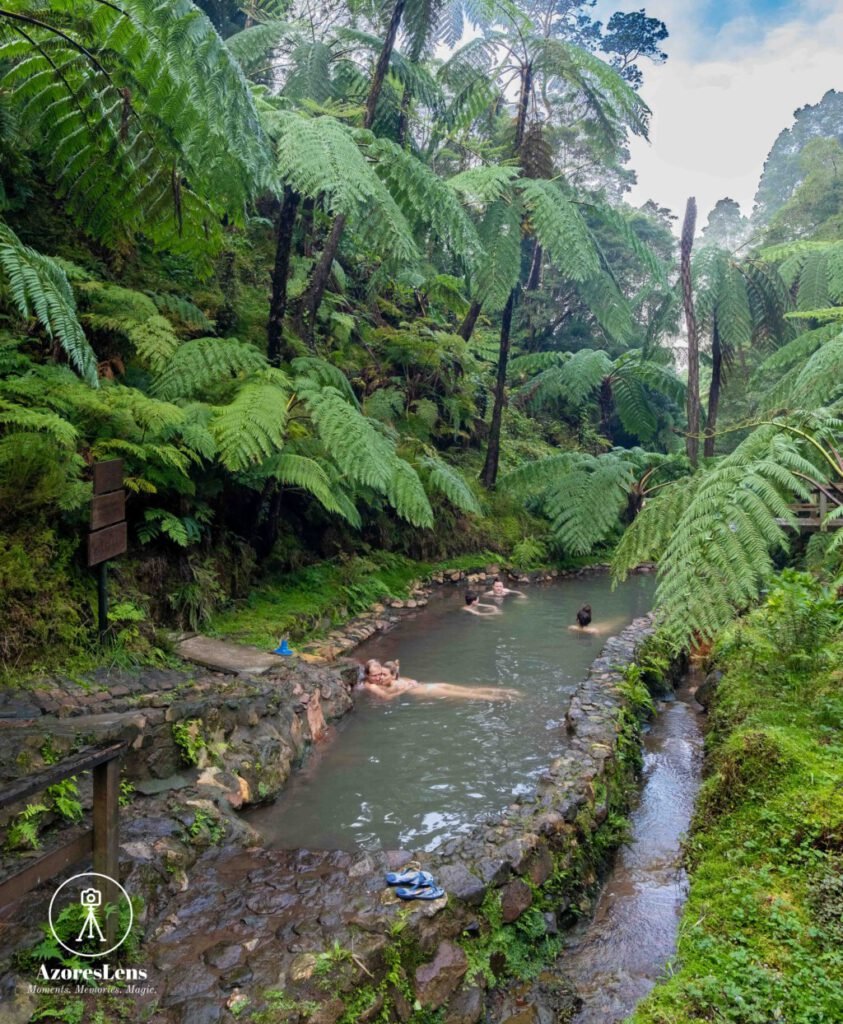
Geothermal Pools:
Caldeira Velha, Although known for its hot springs, Caldeira Velha also has a natural thermal pool where visitors can immerse themselves in warm water amidst the stunning Azorean landscape.
Parque Terra Nostra, Within the Terra Nostra Garden in Furnas, there’s a large thermal pool surrounded by lush botanical gardens. The pool is fed by natural hot springs and is an integral part of the Terra Nostra experience.
Piscinas Naturais, Various natural pools along the coastline of São Miguel, known as “piscinas naturais,” are formed by volcanic rocks and filled with seawater. While not strictly geothermal, they often provide a refreshing alternative for ocean enthusiasts seeking a natural swimming experience.
Poça da Dona Beija, In Furnas, visitors can relax in geothermally heated pools at Poça da Dona Beija. The warm mineral-rich waters offer a soothing experience amidst the island’s volcanic activity.
Active Volcanic Monitoring:
Seismic Activity: While São Miguel has not experienced a recent eruption, the Azores are seismically active, and the islands are equipped with monitoring systems to track any changes in volcanic activity. Scientists closely observe the geothermal and seismic phenomena, contributing to a better understanding of volcanic processes.
Visiting São Miguel allows travelers to witness the dynamic interplay of geological forces and appreciate the resilience of nature in creating a landscape of unparalleled beauty. From the vibrant lakes and hot springs to the rugged coastlines, São Miguel stands as a living testament to the ongoing processes that have shaped and continue to shape this remarkable volcanic island.
Cost Considerations: Budget-Friendly Bliss
Compared to many European destinations, the Azores are budget-friendly. Reasonably priced accommodations, meals, and activities allow travelers to explore the islands without straining their wallets. While costs can vary based on preferences and the duration of the stay, the Azores provide an affordable escape into nature.
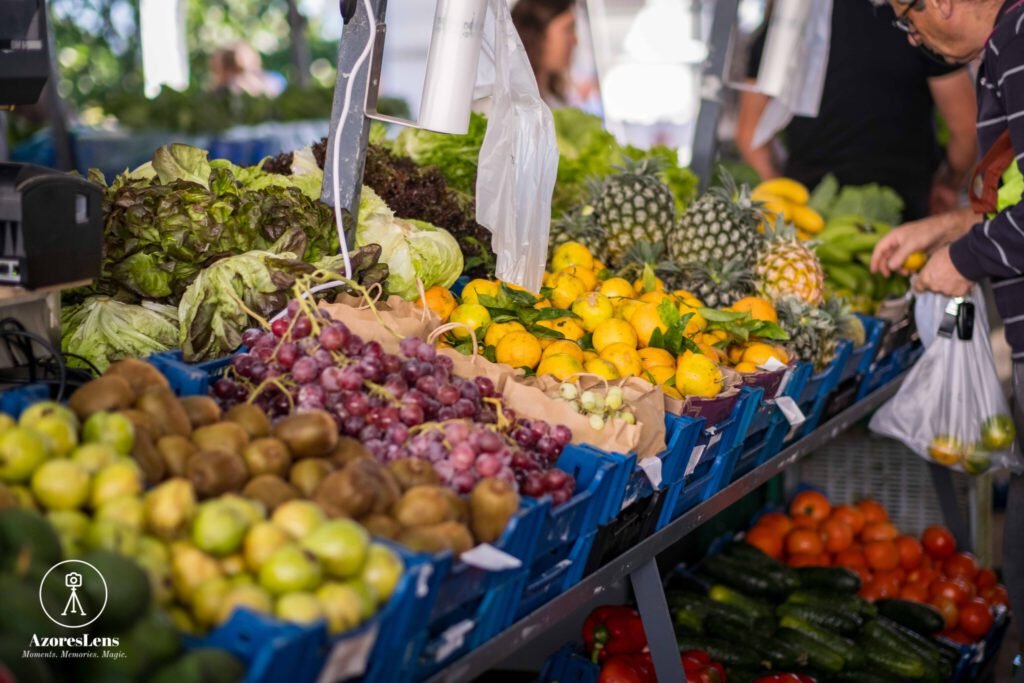
Sustainability at the Core: A Model Destination
The Azores have positioned themselves as a sustainable destination, with a commitment to preserving the unique ecosystems that define the archipelago. The Azores are for the fifth year in the World’s most sustainable destinations and the first archipelago in the world to achieve international certification of sustainable destination by an entity accredited by the Global Council for Sustainable Tourism.
From eco-friendly activities to supporting locally-owned businesses and engaging in conservation initiatives, the islands prioritize responsible tourism.
The Azores tourist strategy is focusing to avoid the mass tourism, that is why strictly control the numbers of accommodations, which create a useful balance for local communities to avoid the negative affects of the tourism and offer an enjoyable tourist destination for travelers.
Geotourism: Unveiling the Earth’s Wonders
Geotourism takes center stage in the Azores, where visitors can explore the geological wonders that have shaped the islands. From volcanic craters and thermal springs to coastal rock formations, the archipelago provides a natural playground for those fascinated by the Earth’s dynamic processes.
In conclusion, the Azores offer a perfect blend of sustainability, natural beauty, and geotourism. Whether you’re a first-time visitor or a seasoned traveler, these islands invite you to immerse yourself in an eco-conscious paradise where every step reveals the interconnectedness of nature and culture. Explore, discover, and leave with a profound appreciation for the Azores a year–round destination that has truly mastered the art of preserving its beauty.
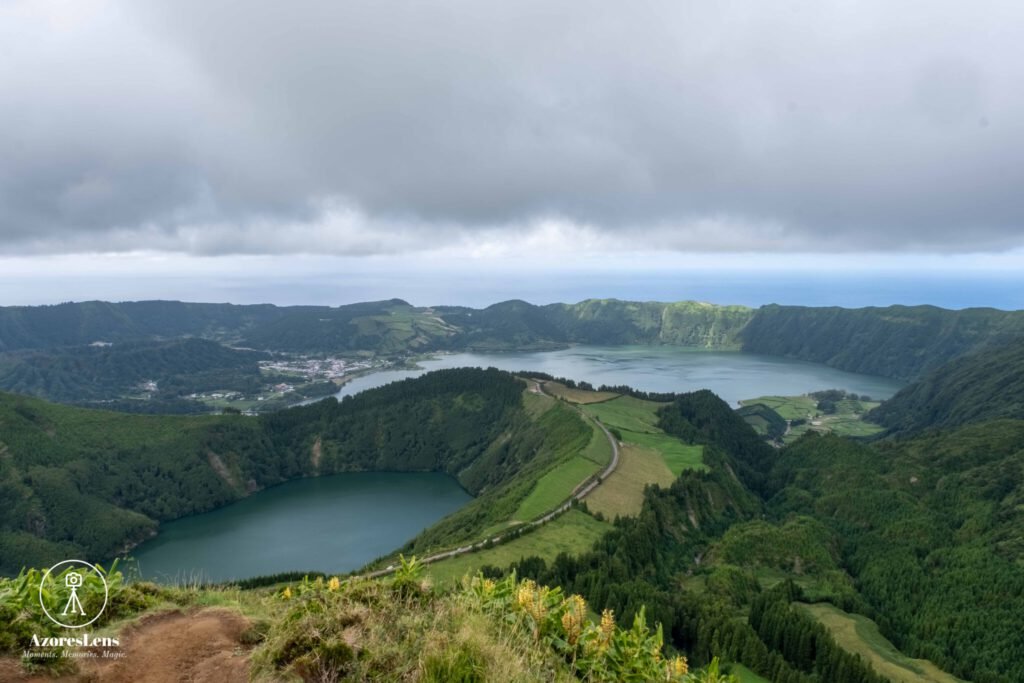
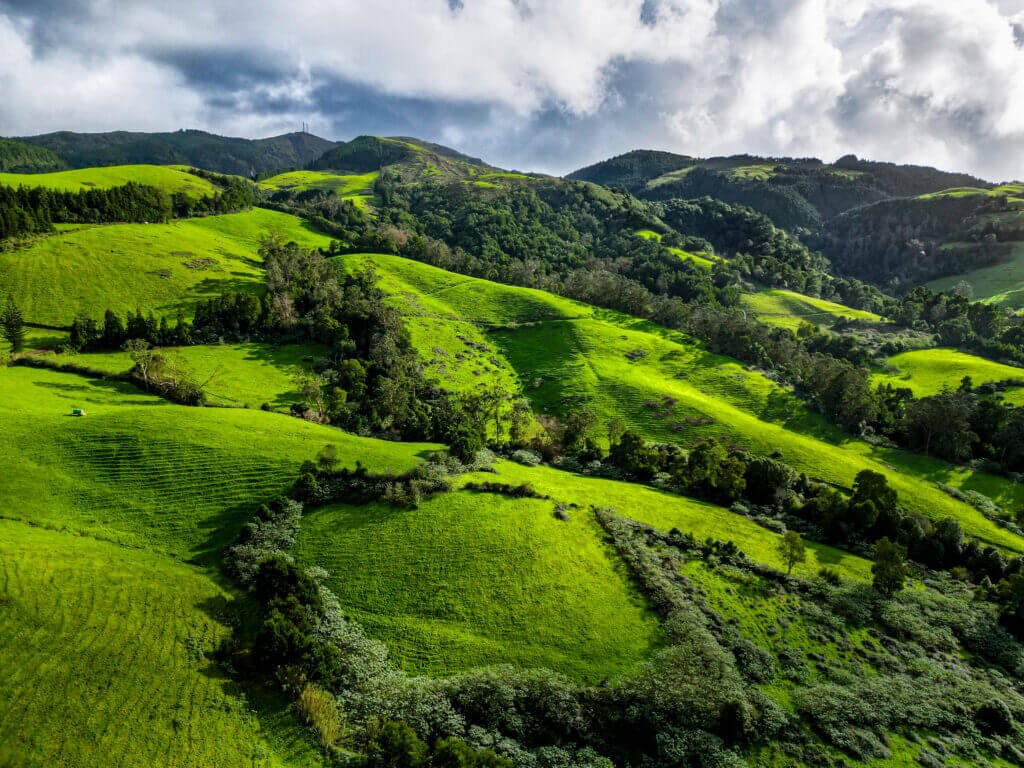
In conclusion, São Miguel emerges as an unrivalled geotourism destination within the mesmerizing tapestry of the Azores. Its captivating landscape, adorned with volcanic wonders, calderas, and geothermal pools, tells a tale of Earth’s dynamic forces. From the twin lakes of Sete Cidades to the steaming hot springs of Furnas, every corner reveals the island’s geological richness. São Miguel is more than a destination; it’s an open invitation to explore the intricate dance between nature and time. The lush green hills, vibrant flowers, and diverse ecosystems beckon adventurers, while the warm embrace of geothermal pools offers moments of tranquil reflection. As you traverse this geologically rich island, the magic of São Miguel lies not just in its interesting geography but in the immersive journey it offers. Embark on this geotourism adventure, and let São Miguel’s landscapes etch memories that resonate long after you’ve bid farewell to this Azorean gem.
